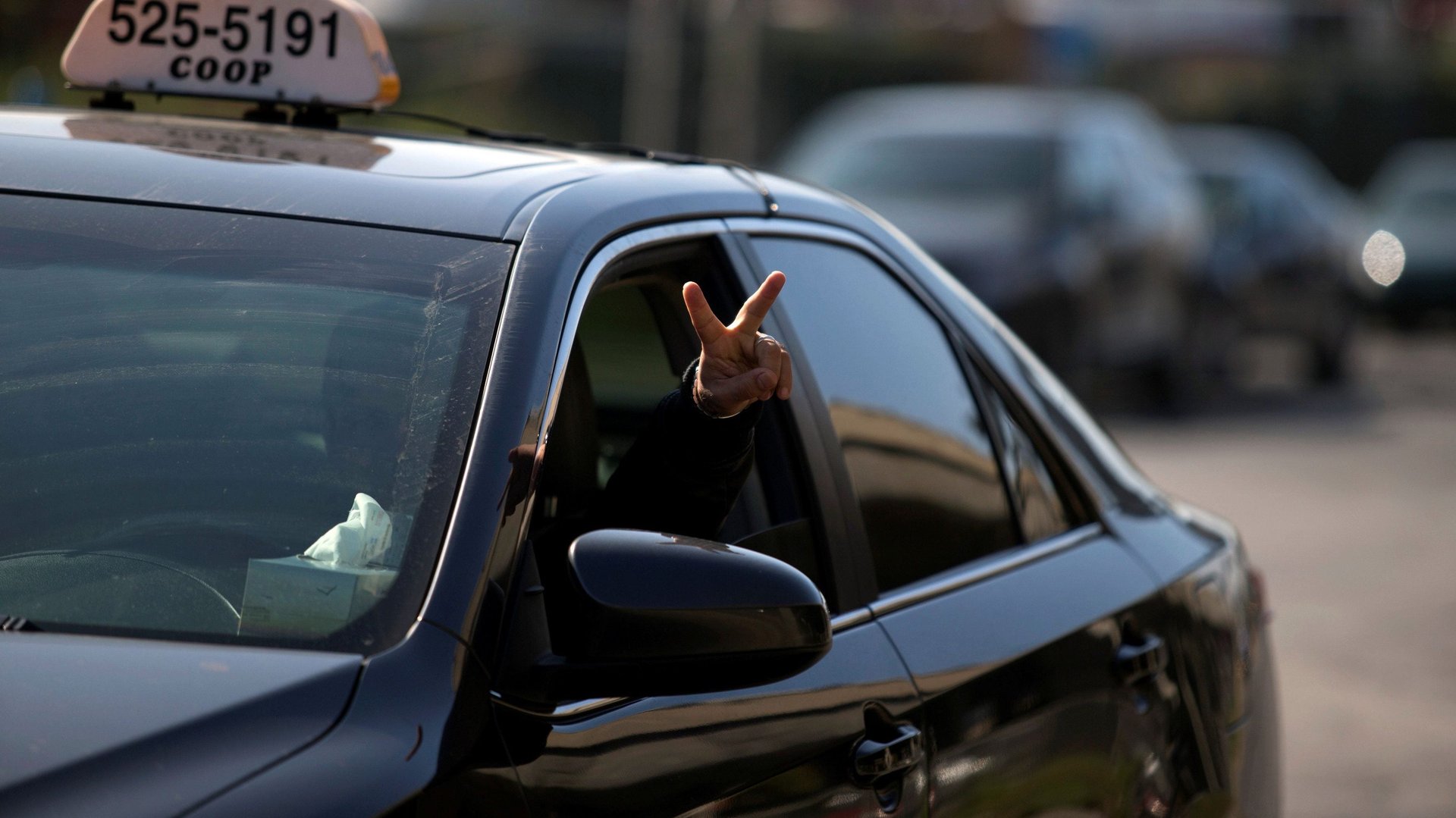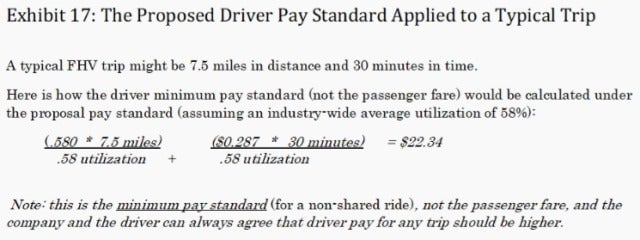Uber drivers in New York could earn more with this simple formula
“For the 60 percent-plus of all New York City drivers who are full-time drivers—and who provide 80 percent of all rides—work hours are not flexible,” begins a recent report on the earnings of ride-hail drivers, thus neatly dispensing with the myth that Uber drivers in New York can be their own boss and work their own schedule.


“For the 60 percent-plus of all New York City drivers who are full-time drivers—and who provide 80 percent of all rides—work hours are not flexible,” begins a recent report on the earnings of ride-hail drivers, thus neatly dispensing with the myth that Uber drivers in New York can be their own boss and work their own schedule.
The July 2 report was commissioned by the New York City Taxi and Limousine Commission (TLC), the local taxi regulator, in response to concerns raised about the low earnings and high operating costs—all in all, the heavy financial burden—faced by the typical driver in the city today.
The report, written by James Parrott of The New School’s Center for New York City Affairs and Michael Reich of UC Berkeley’s Center on Wage and Employment Dynamics, proposes setting a wage floor of $17.22 an hour. The goal is for drivers to take home $15 an hour after expenses like gas, maintenance, and other vehicle costs.
This would represent a 22.5% bump in earnings net of expenses, or an increase of $6,345 per year, for the average driver. The report estimates that 85% of drivers currently earn less than $17.22 an hour. (Of the four apps included in the study, Via, which only offers shared rides, was the only one that consistently paid drivers above that threshold.)
New York is an odd market for Uber. The vast majority of ride-hail drivers are immigrants with relatively low levels of education. Half of them have children and 54% provide more than half of their family income. Nearly one-fifth are on food stamps. This is not the population of retirees and millennial side-hustlers that you often hear talked about in the gig economy.
There are now 80,000 vehicles in New York City that provide app-based rides, more than five times the 13,587 medallion taxis. Those ride-hail vehicles complete more than 17 million trips a month, double the number of medallion trips.
New York City has previously tried to cap the number of drivers working for companies like Uber to no avail. In the famous cap fight of summer 2015, mayor Bill de Blasio and his administration, with support of the city council, proposed all but stopping Uber’s growth in the city in order to study its effect on congestion. However the proposal was poorly thought through—it essentially ignored any potential congestion factor that wasn’t Uber—and Uber campaigned aggressively to defeat it, delivering a stunning rebuke to de Blasio and the city council.
Since then, there has been relatively little talk of putting a hard cap on Uber and its peers in the ride-hailing industry. The new Parrott-Reich proposal does something far more clever than de Blasio’s effort: It creates a natural, dynamic cap on drivers based on utilization.
You can think of utilization as the share of time during which an Uber driver has a rider relative to total hours spent logged into the app, which includes time commuting to and from home, cruising for a fare, or driving to pick up a passenger. Parrott and Reich propose that each company be given a utilization rate, as measured by the TLC in the previous quarter. In 2017, the TLC calculated a 58% utilization rate for Uber and Lyft, 50% for Juno, and 70% for Via.
That then gets plugged into a formula to set a per-trip pay rate based on projected per-minute and per-mile expenses (the TLC refers to Uber rides and similar services as a “for-hire vehicle,” or FHV, ride):

The simple brilliance is this: Parrott and Reich aren’t proposing a flat cap on how many cars or drivers can be on the road. Instead, they put the companies in control. Uber can still have as many drivers on the road as it wishes. But the less work each of those drivers has, the more Uber has to pay. Putting utilization rate as the denominator in the formula incentivizes companies to bring that value as close to 1, or 100%, as possible, lifting driver wages and likely reducing congestion by ensuring that New York City’s streets aren’t continuously overwhelmed by ride-hail vehicles.
In October 2017, researchers at Uber produced a paper (pdf) in collaboration with John Horton, an NYU Stern assistant professor of labor economics, market design and information systems, which asserted that Uber was effectively powerless to raise driver wages. The reasoning went like this: Anyone can drive for Uber, when and for however long they like. If Uber were to raise its rates, driver supply would swell because more people would work more hours, while demand would stay the same or fall, as riders would likely be deterred by higher prices. The result would be less work to go around, such that drivers would make more per trip, but get fewer trips and not earn more overall.
The great irony of this paper was that if you inverted the framing, it was the best possible argument for capping the number of Uber drivers on the road. The core assumption of the paper—the reason why Uber argued it couldn’t pay drivers more—was that the ride-sharing market “is highly elastic,” with existing drivers facing “no quantity restrictions on how many hours to supply” and new drivers facing “minimal barriers to entry” (that is from the abstract of Uber’s paper).
How do you change that? You make the market less elastic. You start to limit supply, and suddenly wages can rise.
This is not a new realization. New York City created the taxi-medallion system in the 1930s precisely because too many drivers were chasing too few riders, leading to long hours and unlivable pay. That solution then became the problem, as demand quickly outgrew supply and the number of taxi medallions remained relatively stagnant. You know the rest of the story: Uber arrived, shattering the monopoly. Fares fell, medallion prices plummeted, and the number of drivers available at the touch of a button soared.
Parrott and Reich aren’t proposing a return to the antiquated medallion system; they are offering something better. By incorporating utilization into the pay formula for drivers, they create a flexible and natural cap, one that rewards companies for having supply match demand. Uber can flood the market with drivers whenever it wants, but if the market doesn’t need them, then Uber, not its drivers, will pay.
An earlier version of this post was published in Oversharing, a weekly newsletter about the sharing economy. Sign up here.